Badi Ki Sabji is a Kumaoni-style vegetarian main course dish from Uttarakhand made with dal vadi. I am sharing a family heirloom badi bhaat recipe without onion and tomato.
What is Pahadi Badi?
Badi is a sun-dried, vegetarian lentil nugget. It is known as dal vadi or vadiyan in other Indian local dialects. Vadi is usually pronounced as Badi in the pahadi dialect, and the whole dish, when served with rice, is called Badi – Bhaat (Rice) or Badi Ki Sabji.
The making process of Pahadi badi is very similar to Punjabi vadiyan but with minimal spices and ingredients. Pahadi Badi is more like a sattvic ingredient.
When I asked my mom the reason behind making these lentil nuggets and storing them, she explained during earlier days, life was not so easy in the foothill of the Himalayas.
The natural produce was limited due to harsh weather and confined resources, during the season when lentils are in abundance Pahadi ladies make lentil nuggets, sundry them in the soft winter sun and store it for the coming bad days, that is how making and storing of badi got so popular over the entire Kumaun region.
Over the years it has become a Kumaoni tradition, and every household follows it like a yearly ritual by making a small batch of dal badi every year. Sadly the art is slowly dying. This post is my ode to all the Pahadi ladies who been making badi from years just to keep this tradition alive.
How To Get Pahadi Badi
I have grown up in the era where I have seen my mother and aunts grinding lentil for the badi in stone mortar and pestle for hours and my great grandmother sitting close by to provide her experienced guidance to do it perfectly.
In those days without any food processor my mother used to grind 3 – 4 kgs of lentil, shape them manually into equal size nuggets and then arrange them neatly in giant sized trays. Our only contribution as a kid was to take those giant trays to the terrace for sun drying.
Today I have capitulated to this metro life and do not even dare to make my own batch of Pahadi badi at home. I get my yearly supply of it from my mother. Nowadys, few online portals from Uttarakhand sell them, or you can buy them from local shops during your visit to the region.
Ingredients Required
Pahadi Badi or dried lentil nuggets are the key ingredient of this badi ki sabji. It is vegan, and gluten free. You can make this curry with any other dal vadi also.
Flour: Whole Wheat Flour thickens the curry and gives it a delicious nutty, roasted taste without using onion, ginger, or tomato.
My Special Ingredients: Finely chopped coriander stalks and garlic are my two star ingredients of this badi ki sabji recipe. However, you can skip adding them as the authentic Pahadi badi has non of these two ingredients.
Seasoning: Salt, Cumin Seeds, Chilli Powder, Turmeric
Oil: I prefer the robust taste of mustard oil. You can use either flavourless refined oil or ghee to make badi ki sabji
Water and Coriander Leaves
How To Make
Step 1) Heat 2 tablespoons of oil in a kadhai. Fry badi (vadi) over low heat till they become deep brown from all sides. Transfer them to a plate and set aside.
Step 2) In the same kadhai heat remaining mustard oil. Once the oil is hot, add cumin seeds, chopped garlic, and coriander stalks. Fry them for 30 – 40 seconds or till garlic is nicely roasted.
Step 3) Add flour, and start roasting it over low heat until it turns light golden and a nutty, roasted aroma is released. Add spices, salt, and stir to combine.
Step 4) Now, slowly add water and from the other hand continuously stir the curry in circular clockwise motion to avoid lump formation.
Step 5) Add fried badi into the curry. Bring the badi ki sabji to a boil over high heat, now let it simmer over low heat for the next 20 minutes, stirring at regular intervals. You will notice after sometime the curry is thick, luscious, reduced to half, and a thick layer starts forming on top. That is the signal badi ki sabji is ready.
Add chopped coriander leaves and a tablespoon of ghee (optional). Serve badi bhaat warm.
Serving Suggestion
Badi Ki Sabji is a Kumaoni style main course dish mainly served with plain white rice (bhaat). If you are planning to make a Kumaoni thali, then serve Pahadi Badi Ki Sabji with rice, arhar dal fry, local radish salad and loads of ghee on the side.
Store leftover badi curry in the refrigerator for 3 – 4 days. While reheating add little water as with time the consistency of the curry thickens.
More Pahadi Kumaoni Recipes
Subscribe to our weekly newsletter or follow us on Youtube for video recipes.
If you try this recipe and love it, please leave a comment and a rating. This helps us grow and reach other food lovers like you.
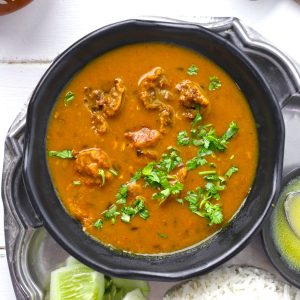
Pahadi Badi Ki Sabji Recipe
- Heavy Bottom Kadhai
Ingredients
- 8 dried Pahadi badi (vadi)
- 6 tablespoon mustard oil
- 1 teaspoon cumin seeds (jeera)
- 1 teaspoon finely chopped garlic (optional)
- 1 tablespoon finely chopped coriander stalks
- 2 tablespoon whole wheat flour (gehun atta)
- 1 teaspoon salt or to taste
- 1 teaspoon red chili powder
- ½ teaspoon turmeric powder
- 3 Cup water
- 2 tablespoon finely chopped coriander
Instructions
- Heat 2 tablespoons of oil in a kadhai. Fry badi (vadi) over low heat till they become deep brown from all sides. Transfer them to a plate and set aside.
- In the same kadhai heat remaining mustard oil. Once the oil is hot, add cumin seeds, chopped garlic, and coriander stalks. Fry them for 30 – 40 seconds or till garlic is nicely roasted.
- Add flour, and start roasting it over low heat until it turns light golden and a nutty, roasted aroma is released. Add spices, salt, and stir to combine.
- Now, slowly add water and from the other hand continuously stir the curry in circular clockwise motion to avoid lump formation.
- Add fried badi into the curry.
- Bring the badi ki sabji to a boil over high heat, now let it simmer over low heat for the next 20 minutes, stirring at regular intervals. You will notice after sometime the curry is thick, luscious, reduced to half, and a thick layer starts forming on top. That is the signal badi ki sabji is ready.
- Add chopped coriander leaves and a tablespoon of ghee (optional).
- Serve badi bhaat warm for lunch.
Recipe Notes:
- Do not fry badi over high heat. They will turn golden from outside and remain uncooked from inside.
- Do not rush the process of frying flour. It is a key step of the recipe. Fry over low heat, and stir it continuously to avoid burning of the flour.
- Adding garlic is optional. In the original recipe of my family, there is no garlic. But I like the taste of it in my badi ki sabji.

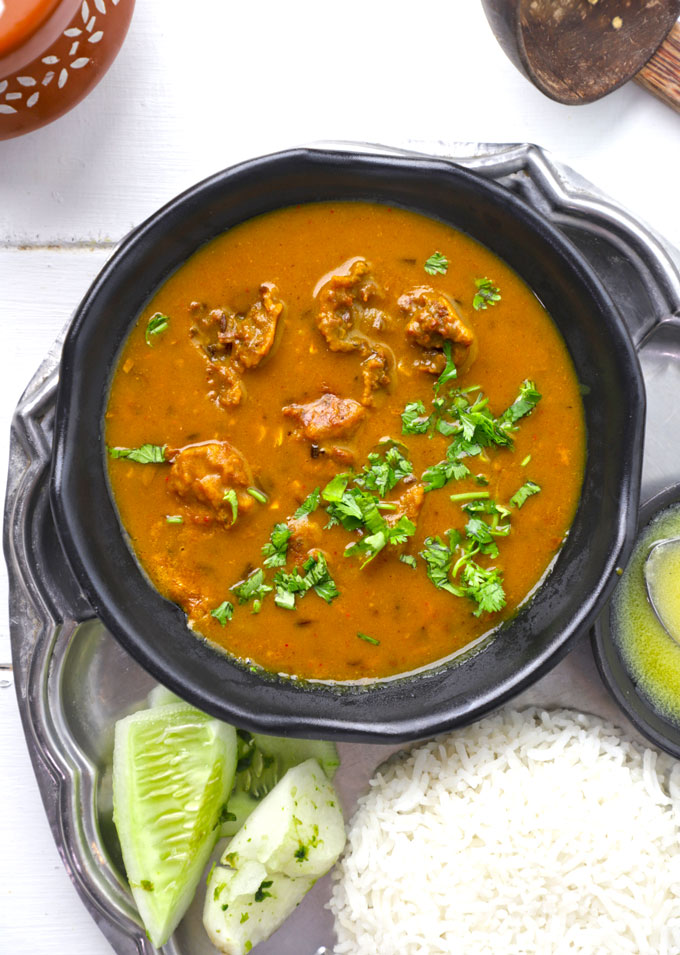
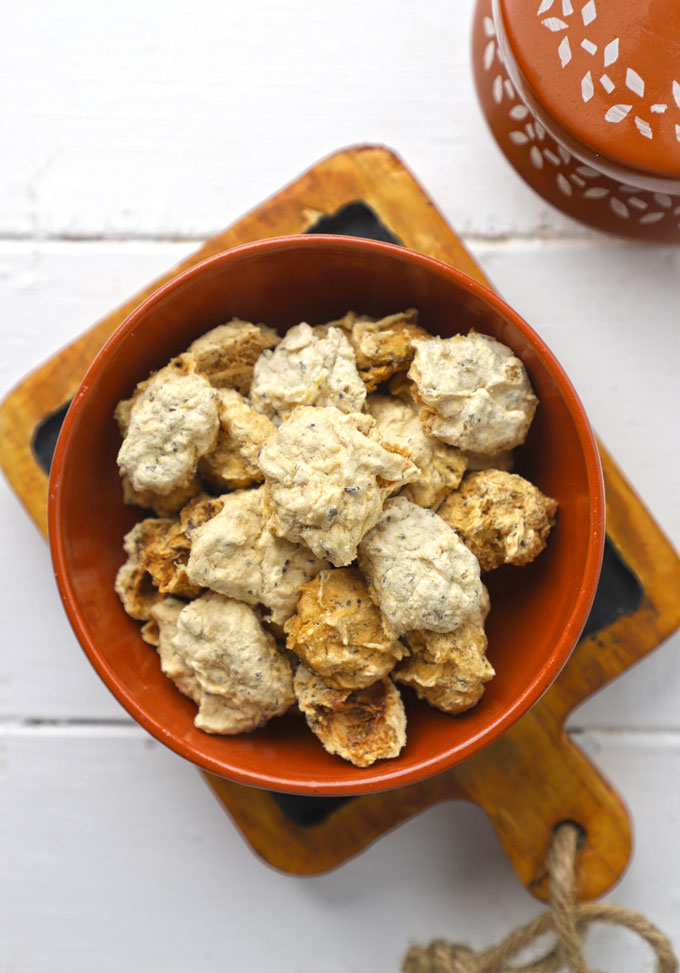
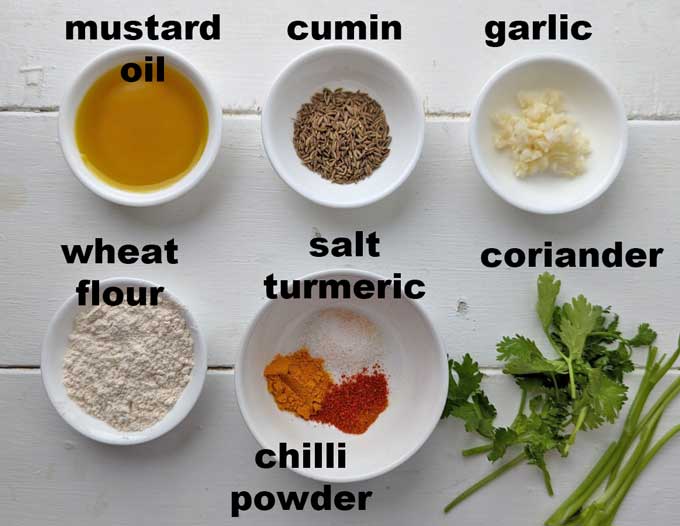
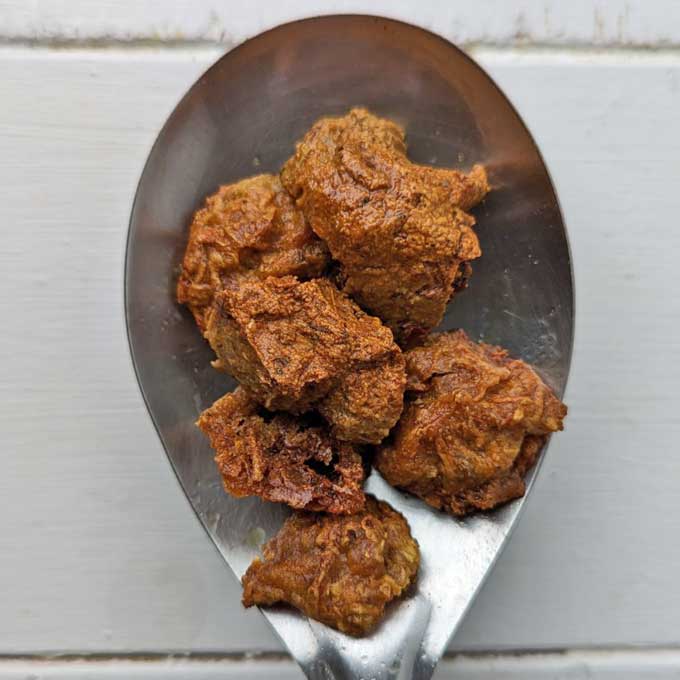
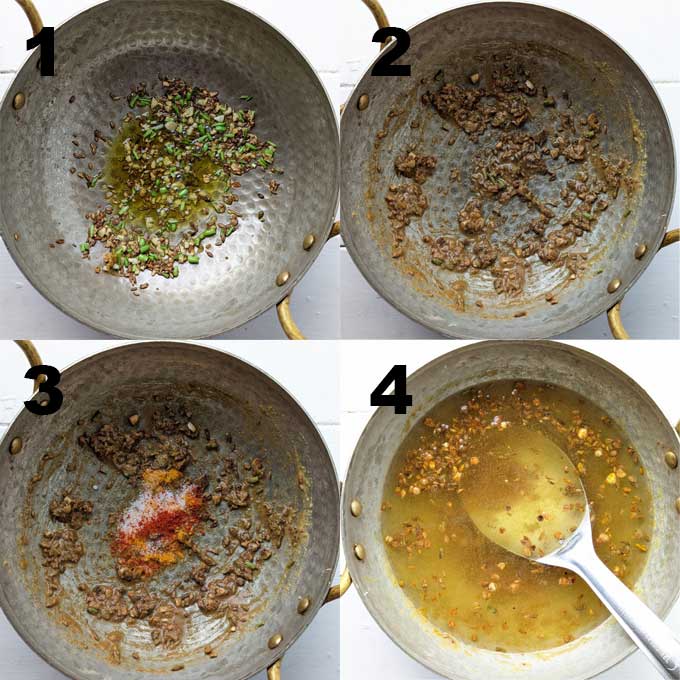
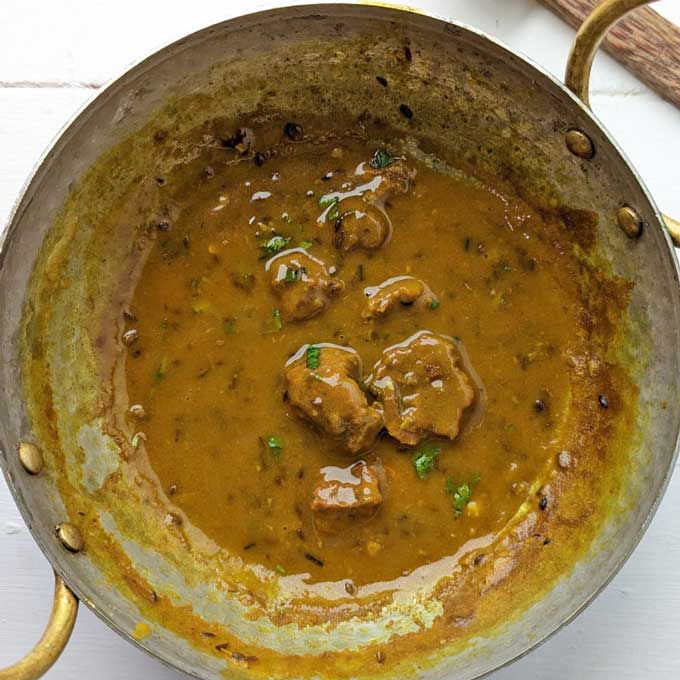
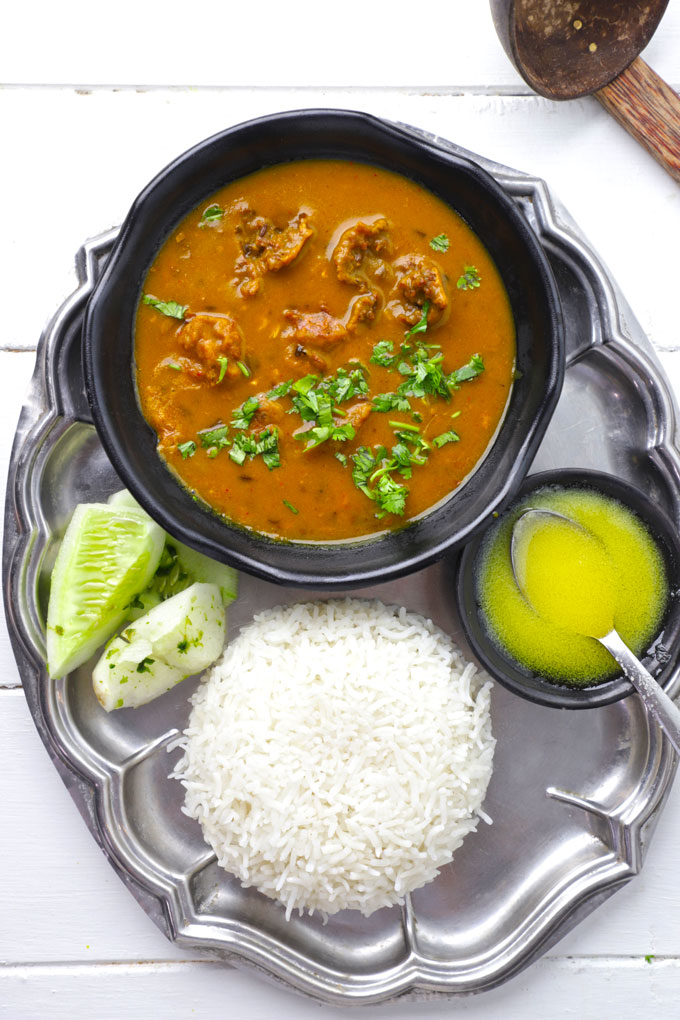




sangeeta says
I would love to taste this Badi bhaat some day. I made a batch of pahadi cucumber badis and might cook this curry with them. Thanks for posting 🙂
Kamalika says
Not just Punjab, it is traditional in Bengal too, as in Odisha and the south, to make and store different types of lentil and rice vadis. Your post brought back memories of homemade badis drying in the summer sun on the terrace. In Bangla also we call it badi and don’t add lots of masala. It’s cooked with vegetables in curries, often “niramish” or with no onion/ garlic… or just fried and eaten with dal and a twist of lime, or accompanying other dishes to give it a crunch. Yum!
Hina Gujral says
Agree with you Badi are popular across India with different regional names and ingredient combinations.
Seema Gosain says
My mom also used to make badi with lentil, bottlegourd and radish. pahadi ladies also used to dry vegetables. We still gets sun-dried pahadi bittergourd and pumpkin from garhwal to make such a tasty dishes.Thanks for sharing recipe from Uttarakhand.
Hina Gujral says
Always my pleasure. Uttarakhand has so many gem recipes.